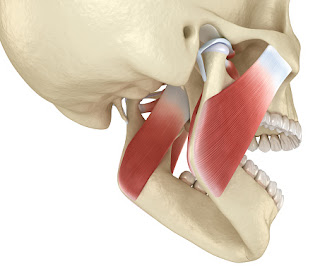TMJ Disorder Treatment Options
You may not think about your temporomandibular joints (TMJ) much, but you use them a lot. The joints connect your jawbone to your skull. Your TMJ springs into action each time you talk, chew, and swallow. TMJ disorders occur when something goes wrong with your jaw joints and jaw muscles. Oftentimes, this happens because of a jaw injury, inflammation such as with arthritis, or overuse.
In some cases, the symptoms of TMJ disorders may go away without treatment. If your symptoms persist, your doctor may recommend a variety of options for your TMJ Disorder Remedies.Along with other nonsurgical treatments, these medication options may help relieve the pain associated with TMJ disorders:
Pain relievers and anti-inflammatories. If over-the-counter pain medications aren't enough to relieve TMJ pain, your doctor or dentist may prescribe stronger pain relievers for a limited time, such as prescription strength ibuprofen.
Tricyclic antidepressants. These medications, such as amitriptyline, are used mostly for depression, but in low doses, they're sometimes used for pain relief, bruxism control and sleeplessness.
Muscle relaxants. These types of drugs are sometimes used for a few days or weeks to help relieve pain caused by TMJ disorders created by muscle spasms.
According to one 2010 study published in the Journal of Dental Research, performing TMJ exercises increases mouth opening range more than using a mouth guard in people with TMJ disc displacement.
These nine exercises from the American Academy of Family Physicians (AAFP) and the Royal Surrey County Hospital may help relieve TMJ pain and improve the movement of your jaw joints. For some exercises, there are frequency recommendations. For exercises where frequency recommendations aren’t available, ask your doctor or dentist for guidance.
Nondrug therapies for TMJ disorders include:
Oral splints or mouth guards . Often, people with jaw pain will benefit from wearing a soft or firm device inserted over their teeth, but the reasons why these devices are beneficial are not well-understood.
Physical therapy. Along with exercises to stretch and strengthen jaw muscles, treatments might include ultrasound, moist heat and ice.
Counseling. Education and counseling can help you understand the factors and behaviors that may aggravate your pain, so you can avoid them. Examples include teeth clenching or grinding, leaning on your chin, or biting fingernails.
When doing TMJ exercises, start slowly. You may feel some pain at first, but it should be tolerable and gradually improve. If the pain isn’t tolerable, consult your doctor. You should do TMJ exercises when you’re relaxed. If you do them when your muscles are tense, it may defeat the purpose.
If your pain worsens after doing TMJ exercises, make an appointment with your doctor.




Comments
Post a Comment